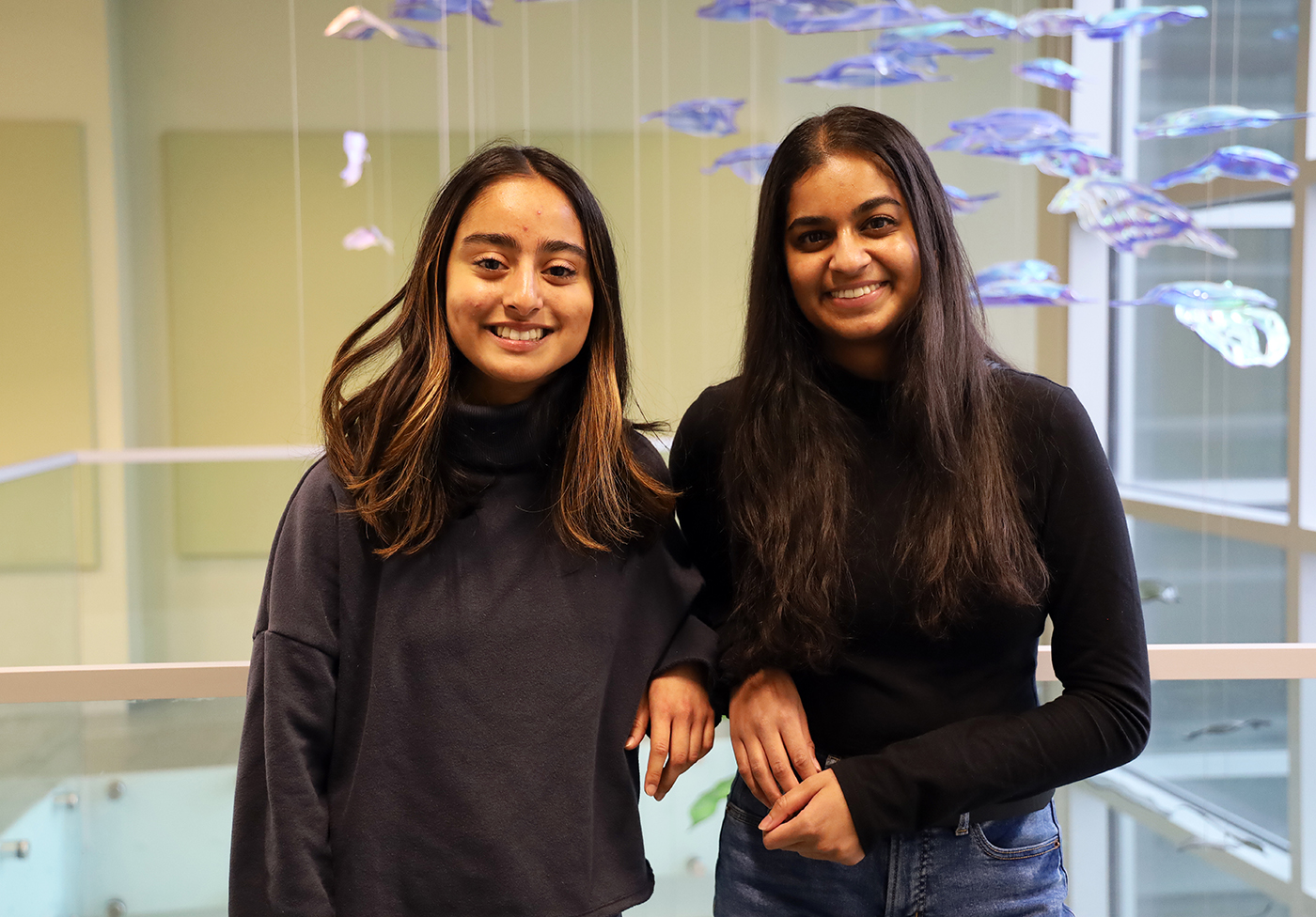Students give back with cookbook
Project highlights healthy and affordable recipes
By Kristen Mitchell

A group of students from the Public Health Student Leadership Council (PHSLC) developed a digital cookbook of healthy and accessible recipes—a free resource for those cooking at home on a budget.
Students from the council’s advocacy committee launched the project earlier this year to address food insecurity in Columbus. After months of development and outreach with local food pantries, the cookbook is now available online.
The cookbook features six recipes for healthy meals and seven snack ideas, along with the anticipated cost of each item. The recipes are focused on shelf-stable foods common in donation boxes and feature overlapping ingredients to minimize the potential for food waste. The recipes also include substitution suggestions to accommodate dietary restrictions.
“It was important to us to be as inclusive as possible,” said Shivani Patel, a junior majoring in environmental public health and co-leader of the PHSLC advocacy committee.
Recipes, which were found online, include apple cinnamon crunch oats, a chickpea salad sandwich, pasta with peas and more.
Community impact
The project has given students the opportunity to take concepts they’ve learned about in the classroom and explore them in a community setting, gaining firsthand knowledge of the challenges that come with food insecurity, health equity and food deserts, areas with limited access to nutritious and affordable food.
Food access is a significant issue in Columbus. Almost 60% of Black households in Columbus are food insecure, compared to less than 25% of white households in the city, according to a 2020 Local Food Action Plan report.
“There’s a lot of work to be done right here, and it’s important to put in the work to make your community better,” said Nandini Rangan, a third-year student in the combined BSPH/MPH program and co-leader of the PHSLC advocacy committee.
Teresa Long, the student organization’s faculty advisor, said the project served as an invaluable early lesson in collaborative relationships.
“This is creative, yet clearly an opportunity to have impact and learn about how to do community engagement and advocacy,” she said. “That is what practitioners in public health do every day.”
Todd Thobe, director of student services and co-advisor for the PHSLC, said watching the students take on this project and see it through publication has been inspiring. They have gained tangible experience in communications, logistics, operations and document accessibility — skills that will serve them well going forward, he said.
The advocacy committee is talking with the leaders of two local food pantries in hopes of sharing the cookbook with those served by the pantries. The committee also plans to launch new projects during the spring semester and focus on additional aspects of health disparity in Columbus.
About The Ohio State University College of Public Health
The Ohio State University College of Public Health is a leader in educating students, creating new knowledge through research, and improving the livelihoods and well-being of people in Ohio and beyond. The College's divisions include biostatistics, environmental health sciences, epidemiology, health behavior and health promotion, and health services management and policy. It is ranked 22nd among all colleges and programs of public health in the nation, and first in Ohio, by U.S. News and World Report. Its specialty programs are also considered among the best in the country. The MHA program is ranked 5th and the health policy and management specialty is ranked 21st.